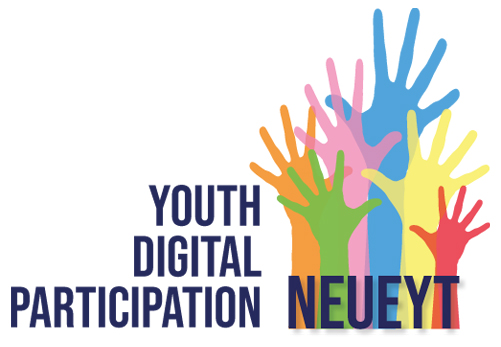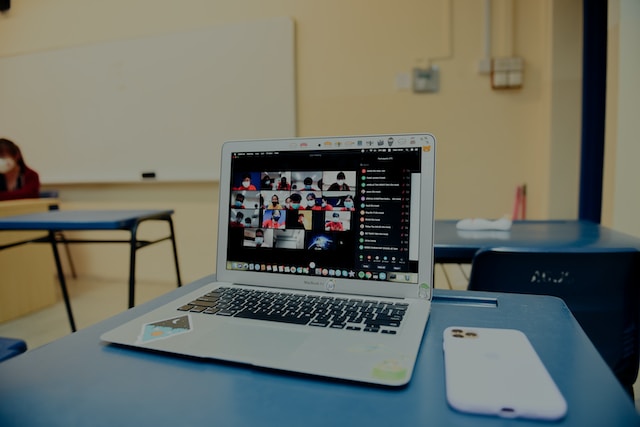The first stakeholder table meeting in Norway was held on 12 December 2022, with the following agenda:
- Introduction
- Short disccussion on the topic of youth digital participation
- Presentation of the initiatives carried out in AgderVoice Up! and Pinpointed
- The tasks and obligations of the stakeholder table

All 14 participants who joined the event said something about their ideas and experiences connected to the topic of youth participation, particularly digital participation. Agreement from all members that the projects put focus on a very important subject. It is important to find structures for participation, and create spaces were the power-balance between youngsters and adult professionals is evened out. It is also important to find ways to involve everyone, not only those who are politically engaged. The two initiatives were presented. The participants that were involved shared their experiences from the initiatives. The youngsters expressed that it had been a lot of fun, and that these ways of expressing their opinion, made them more interested in politics and involvement. The politician said it was a very memorable experience for the politicians that was involved, and that it inspired them to work in different ways to involve youngsters in the municipality in the future.

The 2nd stakeholder table meeting in Norway was held on 6th February 2023, with the following agenda:
- Youth communicate extensively through digital tools.
- The digital tools are just a tool that can connect the youth and the grown adults in society.
- It has been difficult to recruit youth into the project.
- The digital tools are not creating the messages from the youth..
- There is an intergenerational gap in the use of the digital sphere.
- Communication is the essence.
- Digital tools have opened more space for people to engage in society.
- The effect of COVID-19. We have had two years of intense digital participation – in work, studies and social relations.
On the event 12 participants were present and reflected on the few topics listed below:
Reflection 1. Difference in how one uses digital tools. Thoughts for a joint digital arena? Reflection 2. Challenges in recruiting young people. Reflection 3. Young people use a lot of digital tools, but communication is designed for quick information and communication. Political participation is often about long processes. Does one therefore have to learn digital tools? Reflection 4. The films captivated the politicians in such a way that it was easier to discuss. Can digital tools work to create/lead to a good conversation? Reflection 5. SOME often involves showing dissatisfaction or opposition. Digital tools teach little about what democracy really is about or of critical thinking. Is it possible to change this… and break out and rather allow SOME to be used for something other than discontent? Reflection 5: Is the information on SOME too fast so that one does not understand that politics is sometimes difficult?
The 3rd stakeholder table meeting was held in Norway on 29 March 2023, with the following agenda:
- The project has focused on finding new forms of communication between young people and decision-makers. Now we will write a policy report. What is the most important thing we should focus on in the report – based on our experience from the project. And the discussions we have had in the reference group.
- The project will soon be finished. But how can we use the experience from the project in the future

On the meeting 11 participants disscussed two issues:
1) New forms of expression where we already have established political forums with young people/how to make engagement more exciting?
2) How to get young people who don’t usually get involved politically, get a wider range of young people involved?
Inputs gathered from the stakeholder group:
– The use of digital tools are not sufficient in itself, but it can be used to engage and to stimulate good discussions.
– Film as a tool has an indirect effect in that it initiates a constructive conversation between young people and politicians. Film can replace documents that are not appealing to youth.
– Podcast: Make an active discussion. Young people listen to this and become aware of issues. They can both listen to podcasts and produce the content.
– Politicians should come to the schools and talk about how the youth can connect to the politicians.
– Invite young people to make a video followed by a chat with politicians, for example using posters in schools with information.
– Social media is important: Making young people’s attitudes visible without having to click through too much information.
– The politicians need to understand the interests of the youth in local issues. Must be adapted to young people, to be on young people’s terms.
– The politicians should give the young people a clear signal that they are interested in hearing the young people’s opinions.It is not up to the young people to fight for the attention to the politicians.
– It is important with more informal conversation between young people and the politicians: Talk informally about important topics and issues.
– More information on how young people can make contact with “important” people.
– Need to not only address the big issues. Recognize opinions around everyday issues (for example access to football pitches), not just the big issues/questions.
– Making the young people’s opinions/perspective visible in the cityscape.
– Finding suitable urban spaces, for example buses, to collect input from young people about the development of the local environment.
– It is important to use simple tools for feedback from young people, for example survey of satisfaction at airports (“smiley buttons”).
















